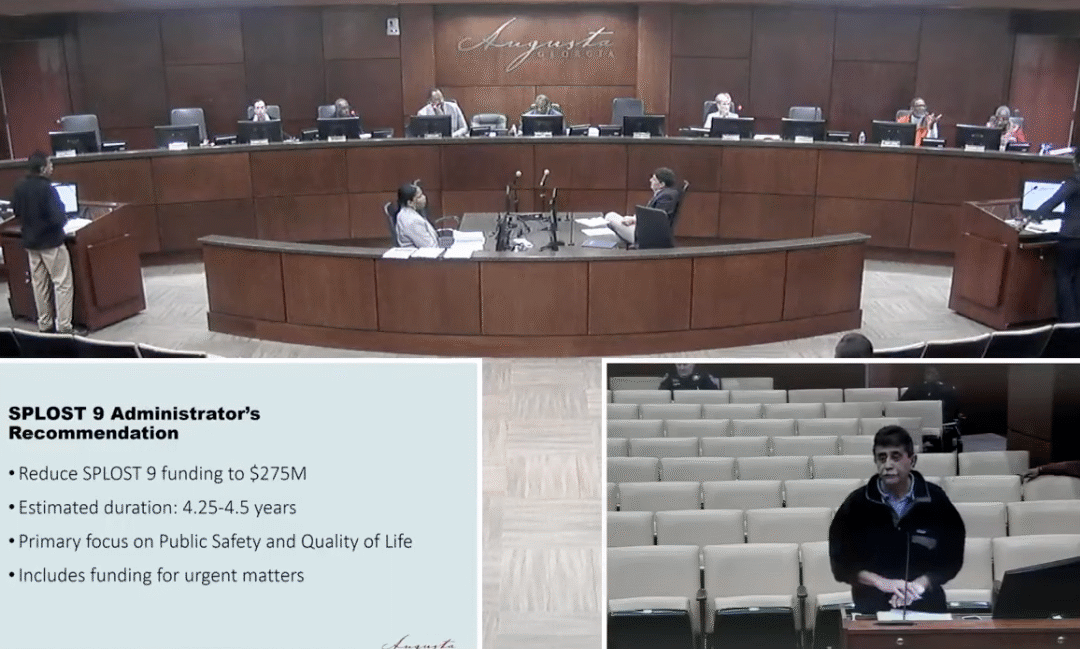The federal government has local governments, including the city of Augusta/Richmond County and Columbia County, scrambling to provide data on polyfluoroalkyl substances, or PFAS, that may be present in the drinking water.
Officials in both counties say the testing was spurred by concern of so-called ‘forever chemicals,’ but that the water being pumped into homes in both counties is completely safe.
New regulations released by the Environmental Protection Agency, EPA, have been set to only allow one part per trillion of the chemicals; the old standard was five parts per trillion.
In a statement released April 10, the EPA announced a $1 billion investment through President Biden’s Investing in America agenda to help local governments conform to the new regulations.
MORE: Up this week: Water park talk, ‘message’ parlor, tiny home community
According to Columbia County Compliance Manager Margaret Doss, PFAS are called “forever chemicals” because they do not break down like organic matter. When these chemicals, which are commonly used in Teflon coatings, product packaging such as pizza boxes and microwave popcorn bags, pesticides and fire retardants, find their way into landfills, they leach into the groundwater even though landfills have protective linings.
“These chemicals are used in everything from candy wrappers to other food containers to keep products from sticking, but we are just beginning to understand that those chemicals do not degrade and they will eventually make it into the groundwater,” Doss said.
PFAS are like the toxic heavy metal mercury, when consumed by any organism the chemicals remain in the body for life, and over time accumulate. This is why people should not regularly consume fish caught in a pond on or near a golf course, according to the EPA, because the contaminants travel from prey to predator.
The trick, according to Doss, is determining what levels of PFAS might be dangerous to human health and how to mostly eradicate them from the water supply without incurring soaring costs for new infrastructure.
While some national media outlets have called the chemicals “carcinogens,” the official report from the EPA only states the chemicals: “may be linked to harmful health effects in humans and animals.”
“The truth is that right now we don’t know the long term effects of the chemicals, the technology to detect one part per trillion did not exist until a couple of years ago,” Doss said.
According to Doss, Columbia County will be testing county water quarterly and if the PFAS are lower than one part per trillion, they will only be required to test annually.
Richmond County is completing the testing as well.
Allen Saxon, assistant director of Augusta Utilities, says his department is also looking at ways to have connectivity between the systems that deliver raw river water and the plants that collect groundwater.
“We would like to have those systems connected so that if problems with the groundwater occur, we can switch to pump in more river water,” Saxon said.
Both Saxon and Doss stress that, like asbestos, when those chemicals were developed, no one thought there might be hidden dangers since most people do not eat their pizza boxes.
According to the Ohio Department of Agriculture, red flags were raised when cows milk from a New Mexico dairy farm tested positive for strange chemicals. The farm was close to Cannon Air Force Base where foam flame retardants are routinely tested.
“I think we all realize that PFAS are here and we are never going to bring the number down to zero, but we are providing the data to eventually determine what is an acceptable level for consumption,” Saxon said.
Scott Hudson is the Senior Investigative Reporter and Editorial Page Editor for The Augusta Press. Reach him at scott@theaugustapress.com











